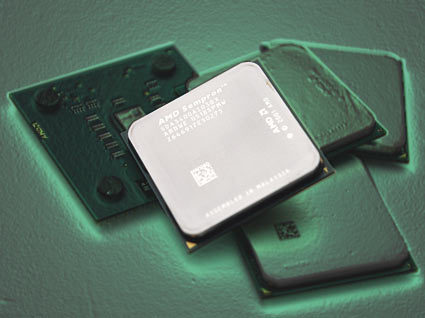A Dissatifying Compromise With AMD's 64 bit Sempron 3400+
AMD Releases 64 Bit Sempron
There are two sides of the processor market. The first consists of high-end PCs run by powerful and prestigious chips from either AMD or Intel, which outshine each other from time to time. And there is the second side, which consists of large volume shipments of stripped-down computers, solely meant to attain attractive price points at the expense of features or performance.
In addressing this indispensable business space, forsaken by large parts of the media and hardly noticed by many end users, both AMD and Intel created low-cost product brands. AMD first tried it with the Duron and now markets the Sempron line; Intel is pushing large numbers of semi-attractive Celeron processors into the market. Both low-end breeds are highly comparable with their Athlon 64 or Pentium 4 relatives, but usually are considerably slower or have fewer features.
For example, while Athlon 64 processors come with either 512 kB or 1 MB of L2 cache and run at a maximum of 2.8 GHz (FX-57 ), Sempron chips have to get by with only 128 or 256 kB of cache, and clock speeds between 1.6 and 2.0 GHz. It's similar in the Intel world: The fastest Celeron runs at 3.06 GHz with 256 kB L2 cache and a 133 MHz system bus, while the P4 family hits 3.8 GHz with up to 2 MB L2 cache, and a few models running with up to a 266 MHz bus clock.
There are two ways of producing low-cost processors. You either create a new chip with a small L2 cache based on existing architecture, in order to squeeze as many chips as possible out of the wafers. Or you can afford to take the same silicon that is used for the fully-features processor and disable distinct features and cache. Yield rates generally are no problem either way, since clock speeds are relatively low anyways.
Get Tom's Hardware's best news and in-depth reviews, straight to your inbox.
Current page: AMD Releases 64 Bit Sempron
Next Page Oh Sempron, My Sempron
Patrick Schmid was the editor-in-chief for Tom's Hardware from 2005 to 2006. He wrote numerous articles on a wide range of hardware topics, including storage, CPUs, and system builds.
